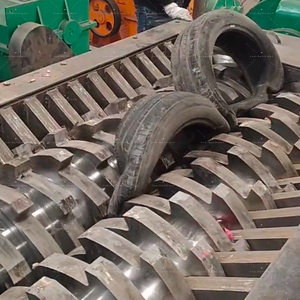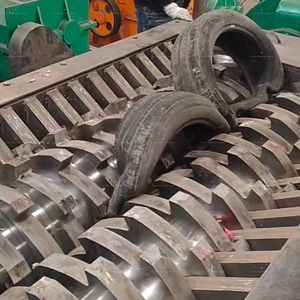(891 products available)


































































































































































































Zones tires come in different types suitable for various driving needs. Here are some of them:
Summer tires:
Summer tires are designed to offer excellent performance in hot weather conditions. They have a rubber composition that is heat-resistant, providing optimal grip on the road. Additionally, summer tires possess tread patterns that minimize contact with the ground, reducing the risk of hydroplaning on wet surfaces. These features make summer tires ideal for sports cars that require high-speed performance and precise handling. However, it's important to note that while summer tires excel in dry and wet conditions, they are not suitable for winter driving. Their performance can be compromised in snowy or icy conditions.
Winter tires:
Winter tires are specifically designed for optimal performance in cold weather conditions. They feature unique tread patterns that provide better traction on snowy or icy roads. The tread design includes deeper grooves and biting edges that grip the snow, reducing the risk of slippage. Winter tires also have a softer rubber compound that remains flexible at low temperatures, ensuring better road contact and braking performance. This is particularly crucial when driving in hilly or rural areas where roads may be more challenging to navigate during winter. By using winter tires, drivers can enhance their safety and vehicle control in winter.
All-season tires:
All-season tires are designed to provide versatility and convenience for drivers who want reliable performance throughout the year. These tires combine the features of summer and winter tires, offering decent traction on dry, wet, and light snowy roads. The tread design of all-season tires includes moderate depth and flexible rubber compounds that balance grip and durability. While all-season tires excel in various conditions, it's important to note that they may not match the extreme performance levels of dedicated summer or winter tires. For example, all-season tires may have slightly longer braking distances on icy roads compared to winter tires or reduced cornering stability at high speeds in summer compared to summer tires.
Off-road tires:
Off-road tires are specifically designed for vehicles that frequently drive on unpaved roads and rough terrains. These tires have aggressive tread patterns with large, deep lugs that provide excellent traction and self-cleaning capabilities. When driving on muddy or sandy surfaces, the lugs effectively grip the ground and expel debris from the tire contact patch, ensuring optimal traction. Off-road tires also feature reinforced sidewalls that enhance puncture resistance and impact protection, which is crucial when traversing rocky trails or uneven paths. The robust construction and gripping ability of off-road tires give vehicles the reliability and performance needed for exploring off-road adventures.
Here are the specifications of Zoom tires:
Size
Tire size signifies the particular width, aspect ratio, and diameter of the tire in inches. For example, a 235/45R17 tire signifies 235 millimeters in width, 45% aspect ratio, and 17-inch diameter.
Tread pattern
The tread pattern indicates the tire's surface design and affects traction, handling, and noise levels. Common patterns include symmetric, asymmetric, and directional treads.
Load rating
The load rating is a measure of the maximum weight the tire can support. It is expressed in load ratings, such as "91H," which translates to 615 pounds per tire.
Speed rating
The speed rating indicates the maximum speed the tire can achieve while maintaining safety and performance. Speed ratings range from "L" (75 mph) to "Y" (186 mph) and are denoted by a letter.
Tread compound
The tread compound refers to the material used in the tire's tread and affects grip, durability, and performance in various weather conditions. Common compounds include hard, medium, and soft blends.
Performance category
Performance category refers to aspects of tire design, such as compound, construction, and tread design, which affect handling, braking, and cornering abilities. Some common categories include touring, grand touring, high performance, and ultra-high performance.
Here are some tips on how to maintain Zoom tires:
Regular inspection
Visit the tire zone and inspect the tires for signs of damage, such as cracks, punctures, cuts, or blisters. Also, check for uneven tire wear, which can indicate alignment or suspension problems.
Proper inflation
Use a pressure gauge to check the tire pressure at least once a month and before long trips. Inflate the tires according to the car manufacturer's specifications. Properly inflated tires improve fuel efficiency, provide better handling, and reduce tire wear.
Regular rotation
Every 5,000 to 7,000 miles or every other oil change, rotate the tires to ensure even tire wear. Follow the manufacturer's recommended rotation pattern based on the vehicle's drive system and tire type.
Wheel alignment and balancing
For optimal vehicle performance and tire longevity, check the wheel alignment and balancing regularly. Signs of unbalanced wheels include vibrations while driving, uneven tire wear, and irregular handling. Improper wheel alignment causes the tires to wear out faster.
Tire storage
If the vehicle is not used for a long time, keep the tires in a dry, cool place, away from direct sunlight, heat sources, and chemicals. Proper storage prevents rubber degradation and prolongs tire life.
Understanding Vehicle Requirements
Every vehicle has its own requirements based on the type and model. For instance, an SUV might require tires that are bigger and offer more traction than a sedan. Thus, it is important to know the vehicle requirements before selecting the zones tire.
Consider Driving Habits
Driving habits play a key role in zone tire selection. For example, a driver who often drives at high speeds may need high-performance tires, while a driver who frequently navigates rough roads might prefer all-terrain tires.
Climate and Road Conditions
When choosing zone tires, factors such as climate and road conditions need to be considered. In areas with heavy snowfall, for instance, winter tires are necessary for zones during the colder months. Similarly, regions with wet roads require tires that can handle the slippery conditions.
Tread Design and Type
Tread design and type should also be considered when choosing zone tires. Different tread designs offer various levels of traction and performance. For example, tires with aggressive treads are better for off-road situations, while those with symmetrical treads perform better on highways.
Load and Speed Rating
Load and speed rating are also important factors to consider when selecting zones tires. The load rating ensures that the tire can support the vehicle's weight, while the speed rating indicates the maximum speed the tire can handle safely.
Budget
Budget is also a major factor that affects zones tire selection. However, it is advisable not to compromise on quality regardless of the budget. There are various options available in the market that suit different budgets without compromising quality.
Brand and Quality
Brand and quality are also important factors to consider when selecting zones tires. Well-known brands often produce high-quality tires that last longer. Furthermore, quality tires offer better performance and safety, making them a worthwhile investment.
Professional Advice
Professional advice is also needed when selecting zones tires. Mechanics and tire experts can provide valuable information on the best tires for a particular vehicle and driving conditions. They can also assist in tire installation and maintenance, ensuring optimal performance and durability.
Some specific tools are required to replace Zone tires successfully. These tools are adequate for carrying out the job with great precision. They include the:
After gathering the right tools, follow these steps to replace zone tires:
1. Prepare the Vehicle
Ensure that the vehicle is on a level, solid ground. The parking brake should be engaged, and wheel chocks should be placed on the contrary wheels to prevent movement. The lug nuts should be slightly loosened with a tire iron before jacking the vehicle up.
2. Jack Up the Vehicle
Place the jack on the vehicle's designated jacking points and raise it until the tire is entirely off the surface. When the vehicle is elevated, remove the wheel covers or hubcaps if required.
3. Remove the Old Tire
The lug nuts should be completely removed after the tire has been jacked up. This will loosen the tire from the wheel hub. After that, the old tire should be removed by pulling it off the wheel hub.
4. Mount the New Tire
The new tire should be aligned with the wheel hub and pushed until it fits snugly against the hub. The lug nuts should be slightly tightened in a crisscross pattern to guarantee even pressure.
5. Lower the Vehicle
Once the new tire is mounted, the vehicle should be lowered gradually. After completely lowering the vehicle, the lug nuts should be tightened with a torque wrench to meet the manufacturer's specifications.
Q1: Are all Zone 4 tires all-season tires?
A1: No! While most Zone 4 tires are all-season, some are not. There are Zone 4 tires specifically made for winter. They are designed with deep treads and softer rubber compounds that grip icy roads better.
Q2: Can buyers purchase tires directly from the Zones tire website?
A2: No! The Zones tire website does not sell tires directly. It only connects people to its dealer network. Buyers should find a dealer near them to purchase tires from, or they can order them online through the recommended dealer.
Q3: What is the warranty period for Zone tires?
A3: The warranty period for Zone tires differs depending on the type and model. For Zone commercial truck tires, the limited warranty period is 36 months from the date of purchase. The warranty period for passenger car tires is 48 months after the purchase date.
A4: The warranty also has other conditions, such as the original purchaser's continued ownership and proper tire maintenance.